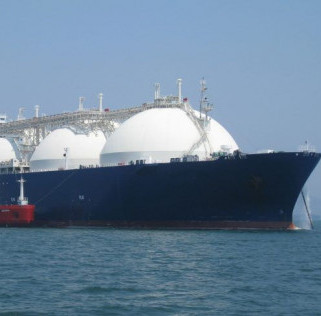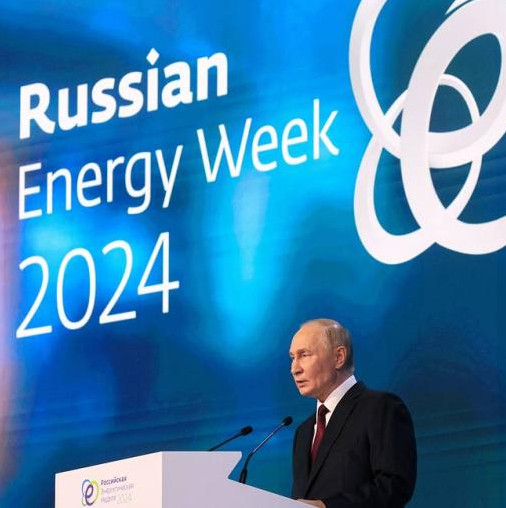Vladimir Koshlakov, who heads the Russian Keldysh Research Center, commented on the current state of affairs and perspectives of some of Russia’s innovative space projects, including a nuclear propulsion spacecraft and a reusable rocket, TASS reports.
Flight to Mars on nuclear-powered spacecraft
According to the head of the heads the Keldysh Research Center, which now runs the project to build Russia’s first nuclear propulsion engine, current rocket engines, powered either by various types of chemical propellants or by low-power electric engines fed by solar batteries, are not suitable for long space flights.
"A person should not spend more than a year or two in space. Nuclear-powered spacecraft will allow a relatively fast journey, and, most importantly, a return flight. This technology has special significance for interplanetary flights and research of far planets," Koshlakov said.
Speaking about a flight to Mars with the use of a nuclear propulsion engine, the official said the project is technically feasible in the near future.
According to him, a journey to Mars on board such a spacecraft will take about seven months.
"[The journey] to the Moon will last several days, yes, while a flight to Mars will last about seven or eight months," he said in an interview with Russia’s government daily, Rossiiskaya Gazeta.
Koshlakov said the first ground trials of the engine’s cooling system were successful.
Earlier, Russian space agency Roscosmos unveiled plans for making a test sample of a megawatt class nuclear engine meant for flights into deep space.
On Tuesday, Roscosmos has uploaded to its Facebook page a video showing the image of a nuclear-powered spacecraft of the future. At present, the Keldysh Center is conducting research into spacecraft boasting more powerful engines - nuclear power plants of a new class, which do not need solar light or solar cell panels.
In 1970-1988 the Soviet Union launched into space 32 spacecraft with thermoelectric nuclear power reactors. In 1960-1980 a nuclear rocket engine was developed and tested at the Semipalatinsk test site.
Reusable rocket
Commenting on the project between Russia’s rocket engine producer Energomash and S7 Space to build a reusable rocket, the Russian space official named a number of requirements for such a launch vehicle.
"Recently, we had a conference on present-day problems of rocket engine-building. [S7 Space head Sergei] Sopov delivered a speech. He said: we need engines that can be switched on about 100 times," Koshlakov said, adding that the question of how many launches will be optimal remains open.
According to the official, the rocket’s "cooldown" period should not exceed 48 hours.
"In other words, a rocket blasts off, then returns and is ready for the next launch with the same engine within 48 hours," he said. "Here are the requirements set by the market."
According to the head of the Keldysh Research Center, engines of a reusable rocket should be reliable and relatively easy to fix.
S7 Space is working on its own rocket on the basis of a sketch design of the Soyuz-5 launch vehicle being created by the space rocket corporation Energia. The first stage of the rocket will be reusable. The company’s working name for the rocket is Soyuz-7 and Soyuz-7SL (Sea Launch). Company head Sergei Sopov said S7 Space had begun to create its own launch vehicle project divisions. Igor Radugin is in charge of them (just recently he moved to S7 Space from Energia).
According to earlier reports, Roscosmos approved, after amendments, a sketch design of Soyuz-5. The rocket will be used for putting the manned spacecraft Federatsiya into low near-Earth orbits. The main solutions and technologies created for the new launch vehicle will be used in designing a super-heavy class rocket.
Propulsion for future satellites
The expert also commented on the search for possible fuel for future satellites, including the use of iodine as a solid propellant.
"However, those works are still at the stage of scientific research in order to create a foundation for future projects. There are many projects, but nuclear energy is now at the forefront, it is seen as the most promising direction," he said.
The expert sees little alternative to electric propulsion for future satellites at the moment.
"There seems to be no alternative to using electric thruster technology in future satellites. Presently, various types of fuel are being considered except xenon: of course, argon which is simple and cheap, and krypton, which has better characteristics that xenon but is not cheap," he said.
Methane-fueled rocket engine project
The head of the Keldysh Research Center said his company is currently looking into all possible options of fuel for rocket engines, including plasma. However, he sees methane-fuelled engines as one of the most promising variants.
Currently, no Russian-made rockets use cryogenic liquid methane as a propellant. The Keldysh Research Center was among the companies that began researching the issue.
"A vast amount of experimental research of various physical processes has been carried out. And today Russia is close to building a methane-fuelled engine," he said.
According to Koshlakov, methane-fuelled engines have several advantages. Firstly, it produces less soot.
"This is particularly important for reusable systems: no need to clean and wash the engine before every launch," he said.
Another advantage is the low difference between the temperatures of the two main components - cryogenic liquid methane and liquid oxygen - which makes the rocket’s design simpler.
"And finally, methane is a relatively cheap type of fuel, which is also a great advantage," he said.
According to Koshlakov, design effort is now under way at the Voronezh-based Khimavtomatika (Chemical Automatics) Design Bureau to create a methane-fuelled rocket engine. The works are scheduled for completion "within the next five years."
Energomash CEO Igor Arbuzov told TASS this summer that bench trials of a prototype of a methane rocket engine are scheduled to begin in late 2019 - early 2020 at Khimavtomatika.









